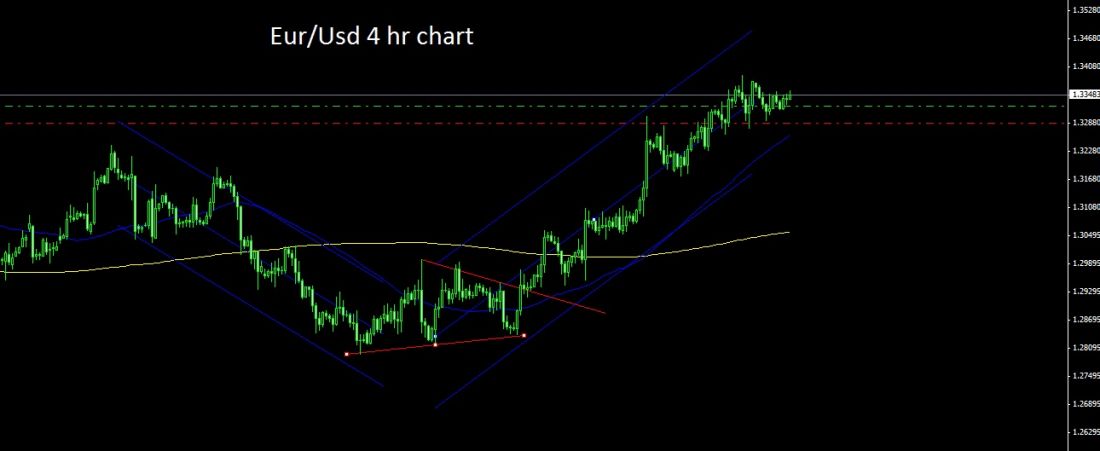“Why worry? If you’ve done the very best you can, worrying won’t make it any better.” —Walt Disney.
Last week I wrote an article about the importance of entering trades in the direction of a trend and used the dollar/yen (USD/JPY) as a prime example. It’s a good thing I mentioned that chart looked like it was going to capitulate a little because that week we saw about a 550 pip plunge.
This week, let’s look at a less extreme example that I also mentioned last week which has coincidentally continued its trending movement. The euro/dollar (EUR/USD) has been in a nice healthy daily uptrend for some time.
As I’ve also mentioned, there are a few ways to trade this, but looking back the easiest way would simply have been to go long somewhere since the end of may and stay in. I’m guessing most traders didn’t do this. Some people probably got in for a few pips long, then a few pips short, and repeated. There’s nothing wrong with picking a few pips here and there as long as you’re right, but man that’s a lot of work.
Let’s look at that swing trading strategy I talked about a few weeks ago. This would help us buy in the direction of a trend, buy on pullbacks, and in this example, keep us out of counter trend moves.
My first step was to put a regression trend channel on the chart. I put two up for illustration. The first failed on May 22. At this time we had an indication of a trend change. After that, we wait for a decent pullback. The first pullback in a consolidation before a trend change is generally pretty big so watch for the .618 retracement to get tested if not blown through a little. This trend change had two such pullbacks before the pair started moving long. So, trading in there can get a little tricky.
But, after the daily candle on May 29, we had a convincing break of the 50 moving average, minor trendlines on that consolidation pattern, and a very bullish candle. After that, I should think the game would be on for long trades.
That brings us to the next step. For some, it’s tempting to short a trend like this all the way up as it hits prior levels. This can work, but it’s one of those difficult ways to trade I keep on mentioning. Fib levels of the prior daily swing move may be good places to look for a potential trend change, or areas of support / resistance, but I don’t like using them all by themselves to pick pivot points in the market. Use them more as yield signs than u-turn signs. You know, look both ways before jumping in.
For the past few weeks, which seems more prudent? Fighting to find the top? Or buying on pullbacks, targeting prior highs and fib extensions and just getting in the trade in the direction of the trend? Throw some hourly stochastic crossovers and maybe some Fibonacci retracements in there, and you really have a good recipe for being on the right side of a trending market.
But all those tools are a lot less useful if you’re stubbornly going short when the market is going long.





